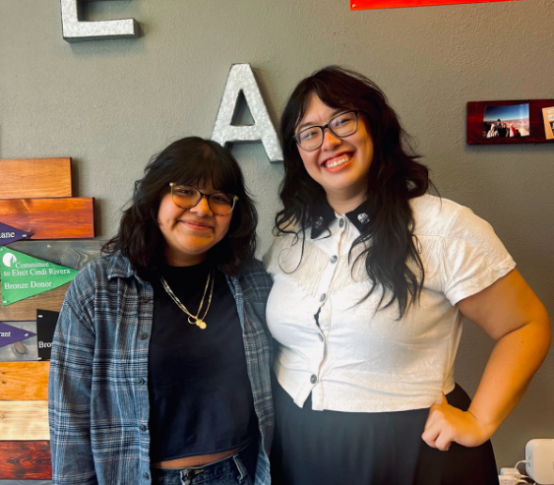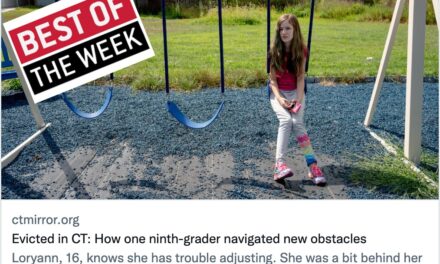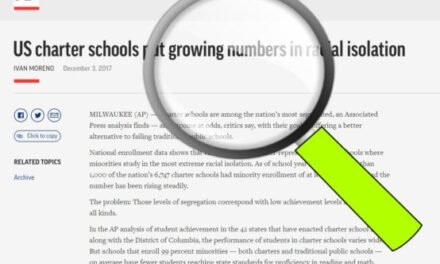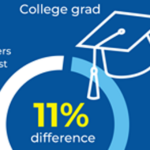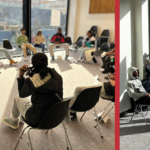Returning to her hometown school district led one education journalist to refocus her news coverage towards student voices.
By Lorraine Longhi
After a teacher in the Clark County School District was brutally attacked by a 16-year-old student last year, I went to the school to talk with students about how they were viewing the shocking event.
I was just three weeks into the job of covering Las Vegas area schools for the Las Vegas Review-Journal.
But I wasn’t exactly new to the school system.
After covering school districts in Phoenix for five years, I was returning to cover the same schools I had attended until I was 13 years old.
Reporting on this story and the somewhat surprising reactions I got from students made me realize that an important part of my job would be to change the scenario: To make sure that students, who seem much more on the ball than I was in my day, get to play a prominent role in coverage.
Over and over, talking with students generated eye-opening insights and anecdotes that I might easily have missed in the past – surprises, disconnects between coverage and reality, and gaps between board priorities and student concerns.
Talking with students generated eye-opening insights and anecdotes that I might easily have missed in the past.
The issue of school safety and violence on campuses had been dominating front-page headlines from the day I arrived.
The student who attacked the teacher pleaded guilty as an adult this spring to felony charges of attempted murder and sexual assault.
One student told me she felt unsafe, but several others said that the headlines they had seen in recent weeks about school safety concerns and fights on campuses around the district between students – and even between students and adults – didn’t match their experiences at the high school.
“It’s not what it’s portrayed to be,” one teen told me.
Another student, senior Omaree Van-Dyke, told me the culture at Eldorado had only continued to improve during his four years at the school. The increased security implemented by the district following the attack wasn’t what was needed to address the problems that led to the attack, he said.
Their viewpoint of the situation — and of the media coverage — was eye-opening.
Their viewpoint of the situation — and of the media coverage — was eye-opening.
Back in my days as a student in this school district, I sadly paid scant attention to current events or whether media coverage fairly and accurately reflected my world.
It’s a much different district now. Clark County now has the fifth-largest school district in the nation, serving roughly 300,000 students. It’s also much more diverse, and a place where students are more involved and vocal about their schooling than I was.
In another early interview, this time with five students at one high school who had all garnered a perfect score on their ACT tests, my background as Asian-American helped me connect with these teens, who were also Asian, about the model minority myth and the nuances of how their race and upbringing had shaped their lives and education.
A month later, one of those students gave me a heads up about an effort he and his peers had undertaken to petition the school board about what they called abrupt changes to their class rankings and graduation requirements that were made without student input.
“To be frank, this is a recurring issue: CCSD must have more transparency with students on the issues that will directly impact their learning,” the students wrote in a letter to the board.
But in a district as diverse as Clark County, I knew it was vital for me to step outside my own background to access what students had to say.
I knew it was vital for me to step outside my own background.
Later that year, ahead of the district’s school board election, I attended a student-led forum where high schoolers were able to ask the candidates about the issues most important to them. Those issues included dress code enforcement, student mental health, and sexual assault on campuses.
What surprised me most was how different their priorities were from the issues of school board politics and dysfunction that I had spent much of the year covering.
Still, I also knew that I wasn’t hearing from thousands of other students who weren’t receiving exceptional honors or showing up at a forum. The students who felt more disconnected, as I had as a student, deserved to be heard as well.
More importantly, by giving them a voice, I would be informing officials and the public about what was happening on the ground at schools, from the perspective of the people whom schooling was supposed to be all about in the first place.
What surprised me most was how different their priorities were from the issues…I had spent much of the year covering.
That’s why as a reporter, I now made it a point to talk to students about the issues that were important to them.
In one story, I reached out to a coworker who volunteers with a nonprofit that connects first-generation college students with current high school students to provide mentorship. Through that program, I was able to find students for a story about the district makinghigh school start times earlier in the day.
For another story, it meant pivoting last-minute at a school board meeting and abandoning what I thought was the story of the day. Instead, I rushed outside to talk to two students who had just testified about their school’s decision to ban cultural regalia at graduation. (That rule was ultimately changed under state law last month.)
Months later, a Las Vegas teenager was accused of raping a drunk and incoherent girl while others watched and recorded the act on their phones. It reminded me of the concerns that one of the girls at the student-led forum had raised about instances of sexual assault at her school.
“I know people that have gone through that and it’s definitely a very traumatic experience to be sharing with people,” the 15-year-old sophomore had said. “I just feel like it should be mentioned more, like have more repercussions. I go to school and I see those people that have been reported for that and I’m like, ‘I don’t feel safe being around these people.’”
Why after the forum hadn’t I made a point of looking into the issue of how schools were handling reports of sexual assault?
Instead, I had defaulted to the more conventional coverage of reporting on the school board election results and what the results would mean for its embattled board.
I had defaulted to the more conventional coverage.
My project this summer is to visit schools myself. And I am starting up an effort to have students write columns for the paper about the issues they view as most pressing.
Juggling the work involved in reporting on student voices with the need to do the conventional reporting on school board meetings and the like is a matter of being more flexible about priorities.
Sometimes, the students are the source of better stories, which was why I ran out of that school board meeting to interview students about cultural regalia at graduation.
In returning to my hometown, education journalism has never felt more personal to me.
Every day I’m faced with the role of public education and what it can do. The district’s achievement numbers are flagging and it has been mired in dysfunction, but there also are people working hard at providing students with successful, happy futures.
My job now is to be one of those people, to continue listening to students about what they need and give them the voice to tell those in power.
Longhi is the assistant city editor for the Las Vegas Review Journal. You can follow her at @lolonghi and find her work here.
Previously from The Grade
How I rediscovered reporting during the pandemic (Linda Jacobson/The 74)
Student voices missing in coverage of NYC specialized schools debate (Teens Take Charge)
Making education news more useful (Ruth Serven Smith/Alabama Education Lab)
A more inclusive approach to covering school shutdowns
ABOUT THE AUTHOR

The Grade
Launched in 2015, The Grade is a journalist-run effort to encourage high-quality coverage of K-12 education issues.


